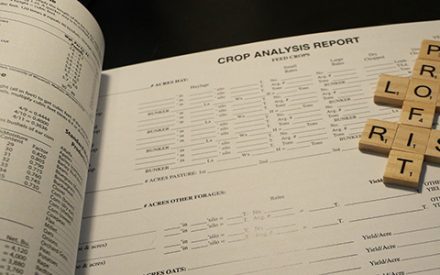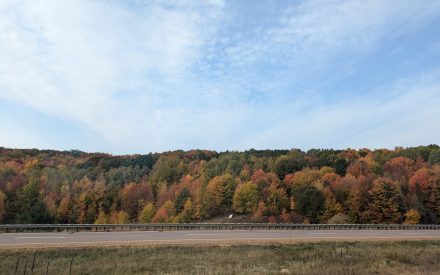Video Summary
Josh Bendorf, climate outreach specialist with UW–Madison’s Division of Extension and the Wisconsin State Climatology Office, presents the latest agricultural weather update for Wisconsin, recorded on Oct. 23, 2025.
This part of the Badger Crop Connect series covers recent precipitation trends, soil moisture conditions, temperature fluctuations, crop progress, and forecasts for the coming weeks. Stay informed on how weather patterns are shaping the end of summer and the start of fall across the state.
Resources
- Ag Weather Outlook for Wisconsin
- Wisconsin State Climatology Office
- Wisconet station locations
- CoCoRaHS Gauges and Gauge Parts
Transcript
0:05
All right.
0:05
Thank you so much, Chris and good afternoon everyone.
0:08
Like Chris said, my name is Josh Bendorf.
0:10
I work as a Climate Outreach Specialist with the Wisconsin State Climatology Office and the Division of Extension.
0:15
I’ll be delivering your Ag Weather Update today.
0:18
And just as a reminder, this is a smaller version of our larger Ag Weather Outlook for Wisconsin, which we put out weekly with the Crop and Soils team.
0:25
And that should the most up to date version of that should be coming out either later today or early tomorrow.
0:33
Excuse me.
0:34
So let’s do a recap of precip since the last time we talked two weeks ago.
0:39
So we’re looking at October 9th through just this morning of October 23rd. So October 9th through 15th, one to two weeks back, one to two inches.
0:50
We saw one to two inches across west central Wisconsin kind of that region right between LaCrosse and Eau Claire.
0:56
It was a localized area of anywhere from one to two.
0:59
Some cases more than two inches, but widespread in the the western side of the state, it was anywhere from 1/2 inch to an inch in the west, which on a weak scale is a little bit below normal for this time of year.
1:13
And then elsewhere outside of the west, totals were less than 1/2 inch.
1:17
And our lowest totals were up in the north, North Central part of the state where we had totals of about 1/4 inch or less.
1:25
But then if we look just this past seven days, things were more concentrated now on the eastern side of the state, totals were highest on the eastern half of Wisconsin with totals over 1 inches common on the eastern side of Wisconsin.
1:40
And there were some pockets of heavier precip up along Lake Superior.
1:43
You see that area there up along Lake Superior anywhere from about two to three inches.
1:48
So with the western side of the state getting rain for getting most of the rain two weeks back and then the eastern half getting rain mostly in this past seven days.
1:56
What we see is this map here, pretty equal distribution of about 1/2 inch to an inch or in some cases upwards of two inches across the state.
2:05
How this compares to normal over the last 30 days.
2:08
Most of the state is still running below normal for precipitation over the past 30 days.
2:12
You see the map in the right there, a lot of those red shadings on that map, that’s anywhere from about 25 to 70% of normal.
2:20
And there are regions up especially in the northern part of the state, but also a little bit in the south where there were totals are less than 25% of average.
2:29
And in those areas we see totals of 1 inch or less since September 21st, so well below normal than what we would expect.
2:36
And then there are also, but there are also some localized areas of above normal precipitation in the west, central and southeast parts of Wisconsin where those totals were a little bit more hyper located where totals are more around 3 inches or more.
2:49
So kind of closer to normal in those areas that saw higher precip totals and then 2025 precipitation.
2:58
So far, looking over the entire calendar year, we see a lot of the state in the west central, north central part of the state, anywhere ±2 inches of normal, so right around average.
3:10
But then if we look more up in the northwest part of the state or down in the far south, we see there’s some deficits of several inches in some cases.
3:18
And those are the areas of the state right now that are running the driest. Wisconet soil moisture.
3:25
Unfortunately, with the government shutdown, we are unable to provide NASS soil moisture reports.
3:30
But thankfully we have our Wisconet network and we can use that to look at how our top soil moisture this week compares to last week.
3:38
And looking back one month ago, for the most part, we look at this week’s totals compared to last week.
3:44
It’s anywhere from a few within a few percentage points of where we were last week.
3:48
So not any real drastic changes from last week’s report.
3:53
We see there there are some big changes from where we were one month ago.
3:59
This is a satellite moisture, a soil moisture product, estimating soil moisture in the top 1m of soil and then comparing that to what we would expect to see for this time of year.
4:09
If we look at this maps, the one map in the middle is this week’s soil moisture estimates and then comparing that to the map on the right from one week ago, we compare those two maps.
4:18
We see similar conditions this week compared to last week with our driest soil moisture conditions in the north and east.
4:25
Those areas that are shaded in red, below normal conditions are common across most of Wisconsin.
4:32
But in that area in the west, west central, we see some pockets of near normal conditions.
4:38
Those areas shaded in gray where precipitate recent precipitation totals have been a little bit higher.
4:44
And there’s also has been some above normal conditions emerging in and around the Milwaukee County area since last week from some of that rainfall we got last week.
4:54
Turning now to the drought monitor.
4:55
There has been very little change in the drought monitor from last week.
4:59
We see a large portion of the state is still running in at D0 abnormally dry category.
5:04
About 70% of the state is covered in D0 and right around 11% right now is in D1 or moderate level drought mostly concentrated in the northwest, east central and southwest parts of the state.
5:18
Turning now to the whole upper Midwest, what are we seeing for drought outside of Wisconsin. Compared to last week, there were small decreases in coverage at all drought levels.
5:30
Most of that improvement came in southern Illinois into parts of Missouri.
5:35
You see there is a 5% drop in the amount of D2 level drought that we have in the region from last week.
5:41
Most of that was in that area in southern Illinois into southeastern Missouri and there was a little bit of D1 expansion up to our north and west in Minnesota.
5:51
Overall, about 64% of the Midwest right now is drought free.
5:57
Turning now to temperatures, looking at temperatures from last week and how that compares to normal, average temperature range last week was anywhere from 56 to 60° in the south and 46 to 50 in the far north.
6:09
And similar to what we’ve been seeing over most of this past the past month or so, temperatures have been running above normal, anywhere from 4 to 8° above normal for most.
6:21
Those areas there shaded in dark orange and red, with pockets of 8 to 10° above normal in southern and central Wisconsin.
6:29
So things were still pretty warm.
6:31
But even with that this past, just this morning, last night, things got a little chilly.
6:37
Overnight lows were near or below freezing across most of Wisconsin, even across southern locations.
6:43
The map there I’ve included on the left hand side of your screen that’s showing the overnight minimum temperatures just from last night and early this morning across Wisconet sites.
6:53
And you can see that there are some stations even in the southern part of the state that are getting down into the mid to low 30s.
6:58
And the map I’ve included on the right is the forecast from the National Weather Service for this upcoming evening into tomorrow morning.
7:05
And we see now in this case, we have lows in the 20s forecasted across most of the state.
7:10
And you might be asking yourself, is this normal for this time of year?
7:13
Well, actually this is a little bit late.
7:15
Our first freeze is running a little bit later than we would expect for this time of year just because of how warm it’s been usually at least in southern Wisconsin.
7:24
We would expect our first freeze 32° to occur within the 1st 10 days of October and our first hard freeze right around October 20th.
7:34
Looking out of 30 day temperatures, average temps range from the low 60s in the southwest and east central to the to the mid to upper 50s in the north.
7:43
And again, it’s been very, it’s been warmer than average pretty much across the board, 6 to 8 above normal for most.
7:51
And how this compares to climatology, how this late September and October has compared to other falls in in previous years.
8:01
Right now we’re kind of sitting in the top five.
8:03
This is one of our top five warmest past 30 days that we’ve experienced on record.
8:09
These are estimates from the Iowa Environmental Environmental Mesonet, not official numbers from NOAA.
8:15
Since the government has shut down.
8:16
This just gives us an estimate of how warm it’s been this fall.
8:20
Turning now to our outlook, 7 day precip forecast, our best chances for rain over the next week or so.
8:28
It’s looking dry right now through the weekend, but we have some increasing rain chances on Monday and Tuesday of next week with our best chances in the west and northwest.
8:37
And just just as for context, average precip this time of year is right around .6 inches.
8:43
So some of those areas in the west are gonna be, if this forecast holds true, right around that. Looking out 8 to 14 days as we get into the first days of November, there is a lean towards above normal temperature statewide, not necessarily a slam dunk by any means about a 40 to 50% chance.
9:02
And the northern half of Wisconsin and precip is leaning towards near normal for most and maybe just a little bit above normal in that far, far northern part of the state of Wisconsin. For the month of November
9:16
a lot of uncertainty right now in the outlook.
9:19
So we can’t say with certainty as to what our leanings are for precip and temperatures, but there is a little bit of a lean towards above normal precip in the far northern northwest part of the state.
9:31
Similarly for temperatures for the 90 day outlook November 1st through January 31st, equal temperature, equal chances for temperature statewide, maybe a little bit of a lean towards above normal in the far SE, but nothing strong by any means.
9:47
And then a slight lean towards above normal precipitation statewide.
9:50
And you can see there on the bottom when we talk about normals, what those normals are for this three month period.
9:57
And so that’s all I have for you today.
9:59
I’ll be happy to take any questions in the chat and be sure to check out the larger report that will come out later today.
10:06
Thank you.
Badger Crop Connect
Timely Crop Updates for Wisconsin
Second and fourth Thursdays 12:30 – 1:30 p.m.
Live via Zoom

 ▶ Fall 2025 Financial Assistance for Producers
▶ Fall 2025 Financial Assistance for Producers ▶ Fall 2025 Ag Policy Update
▶ Fall 2025 Ag Policy Update ▶ Fall 2025 Corn and Soybean Market Outlook
▶ Fall 2025 Corn and Soybean Market Outlook ▶ November 6 Ag Weather Outlook for Wisconsin
▶ November 6 Ag Weather Outlook for Wisconsin


